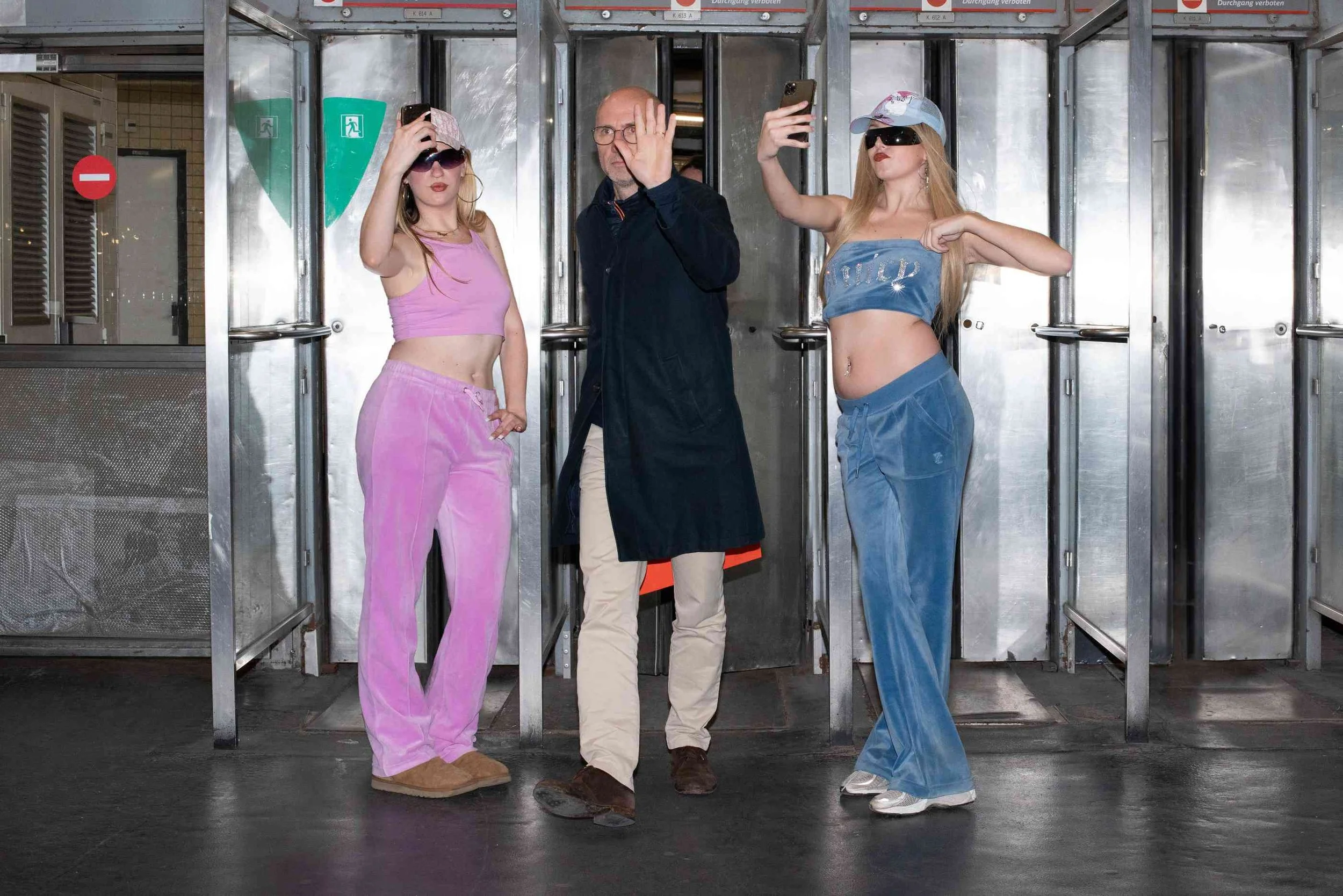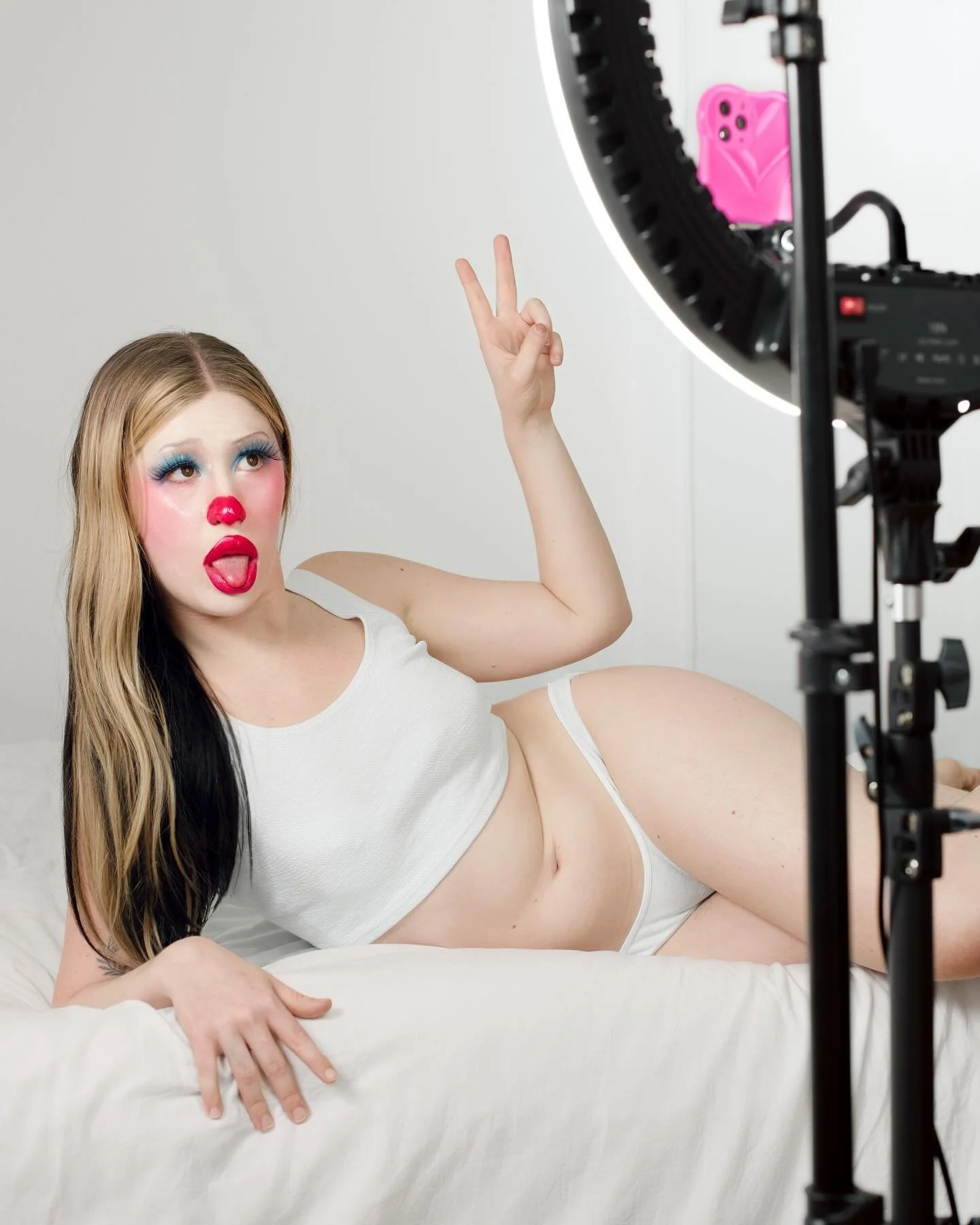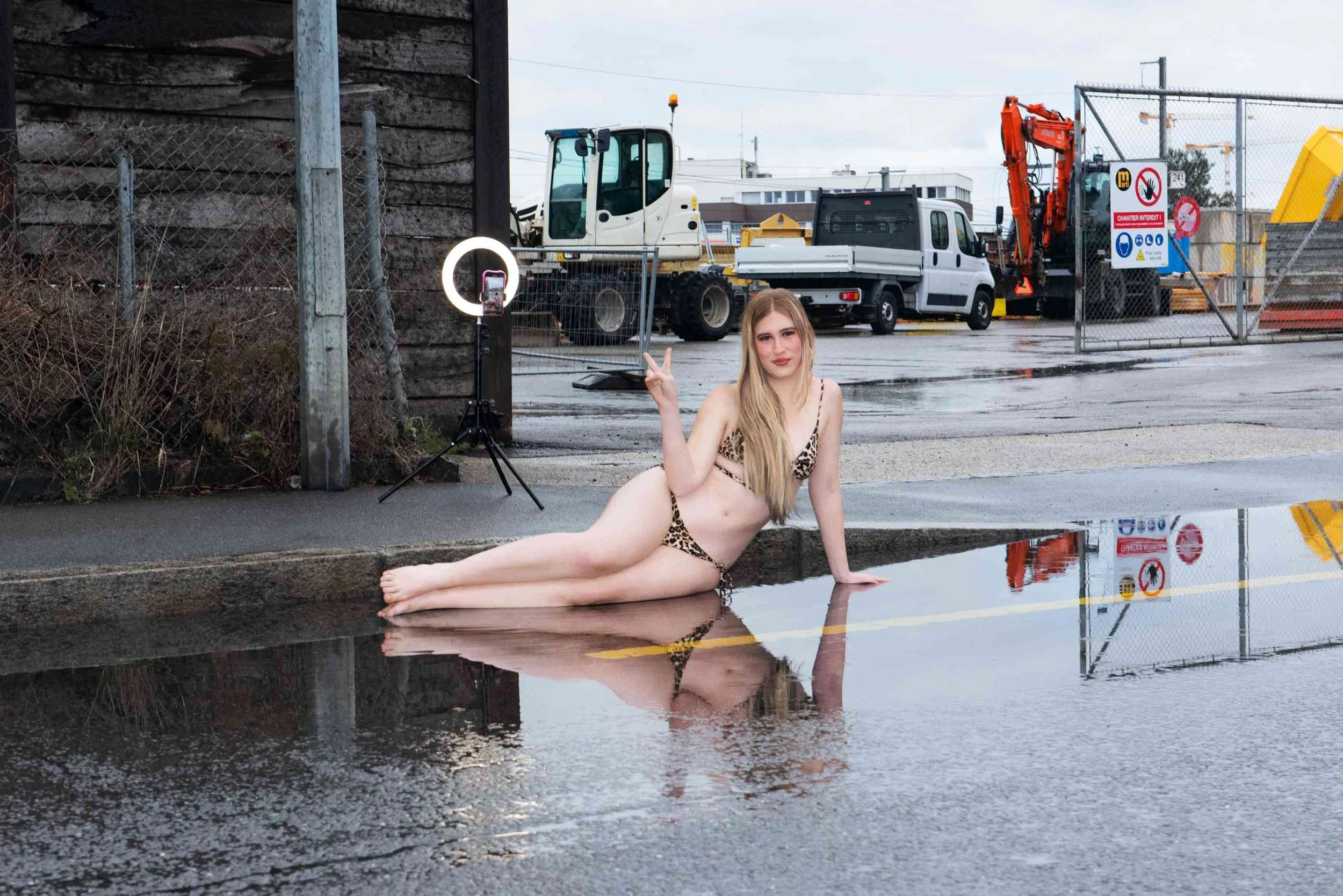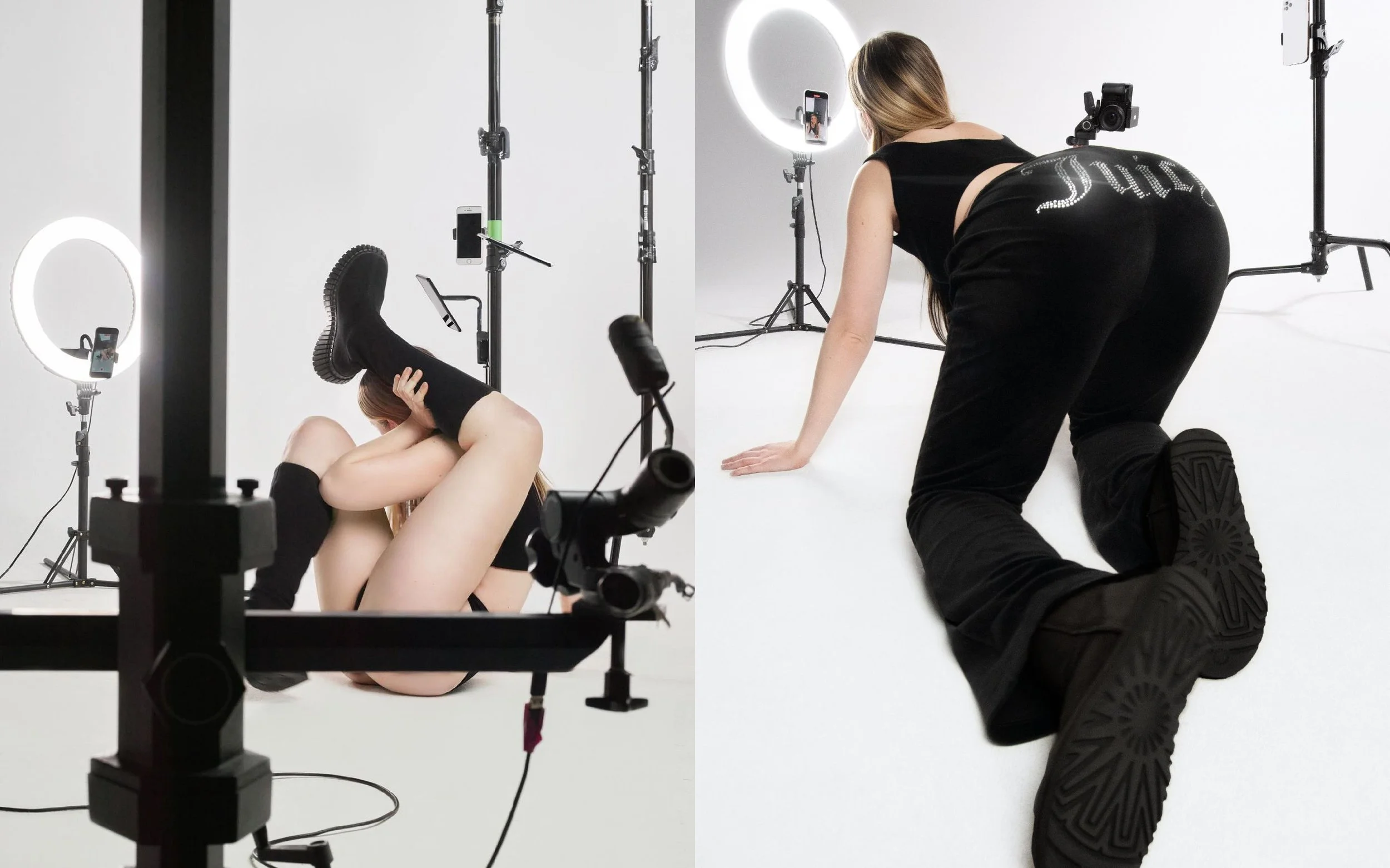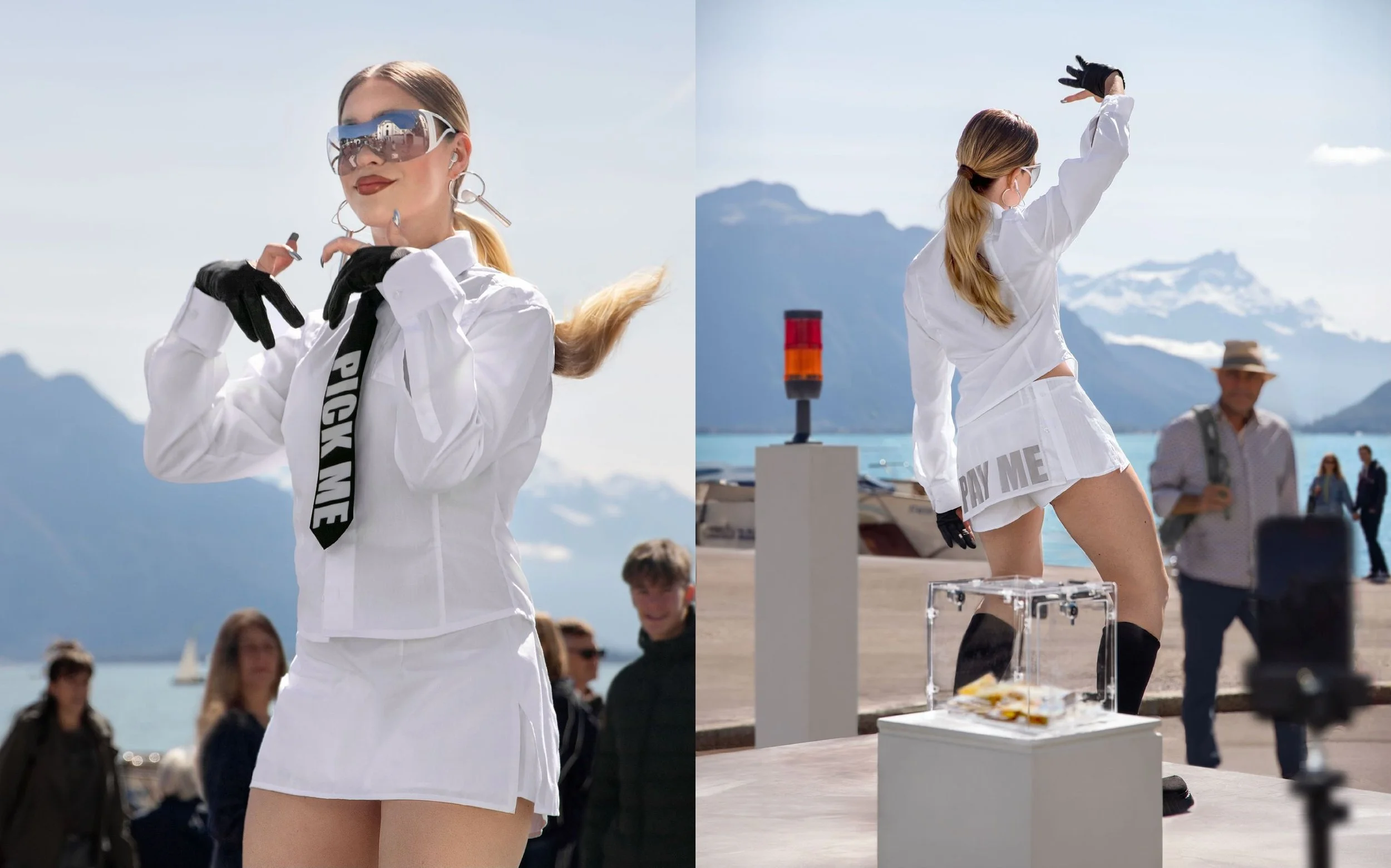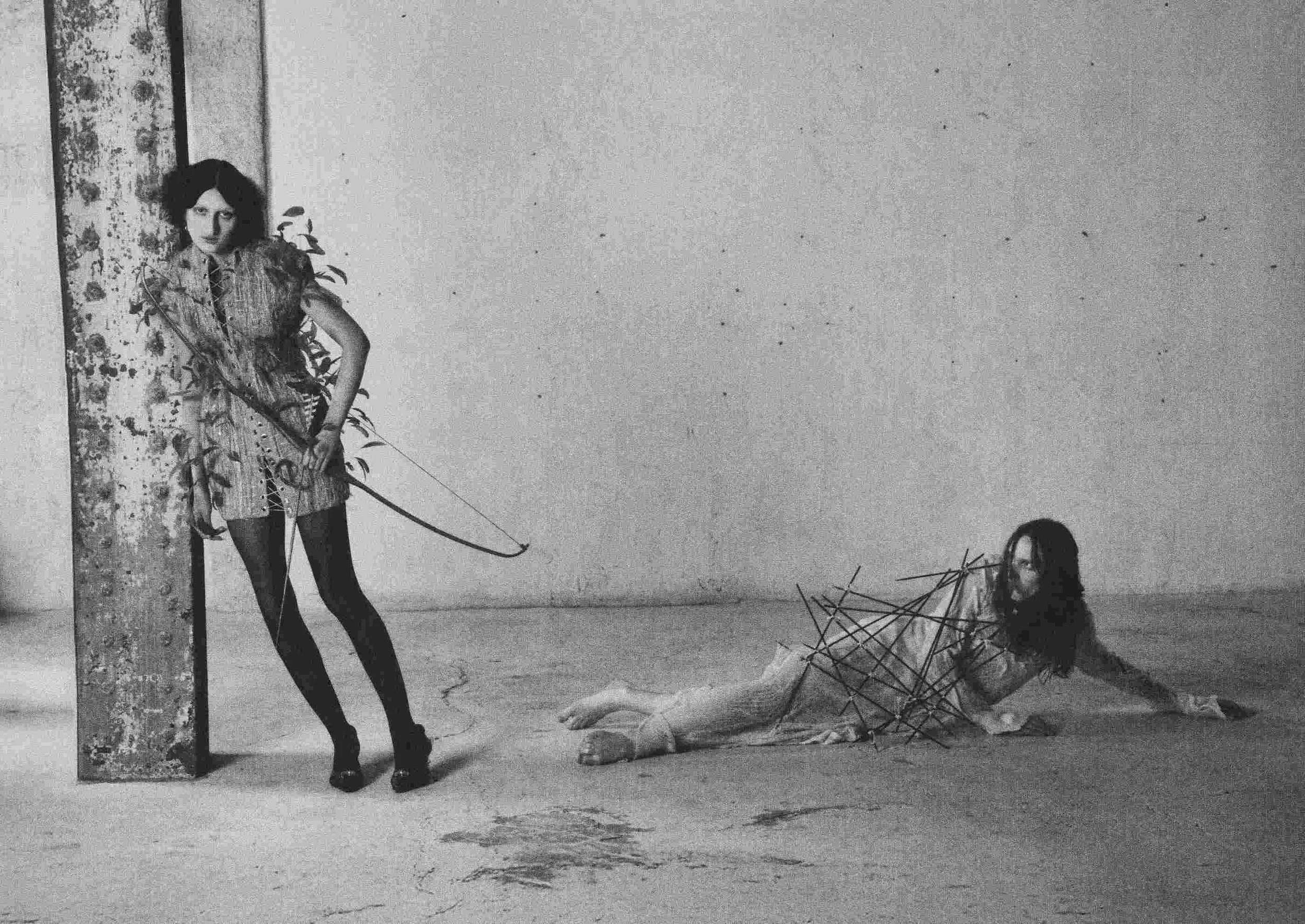Amandine Kuhlmann
Amandine Kuhlmann examines the fragile architectures of femininity and the codes that sustain them, reworking the visual languages of pop culture and social media into critical, performative gestures. Born in 1992 and based in Paris, her practice spans photography, video, and performance, moving between satire and sincerity to expose the political undercurrents hidden in everyday images. With projects like Cash Me Online, Kuhlmann navigates the contradictions of platforms such as TikTok and Instagram, where attraction and alienation intertwine, using their aesthetics as Trojan horses to question legitimacy, intimacy, and power in the digital age.
Your practice consistently interrogates the structures of contemporary culture and the normative systems embedded within it. What was the very first spark that made you realize art could be the necessary vehicle for such expression? Was there a formative moment that awakened in you the impulse to articulate critique and thought through artistic means?
Initially, I was drawn to the image's aesthetics and approached it in a fairly superficial manner. Gradually, with time and maturity, art became for me a tool for reflection and a way to channel my personal, social, and psychological questions.
I learned to question the visual codes that initially attracted me, to understand what they referred to, where they originated, and why they existed. This led me to appropriate them and play with them, sometimes in a satirical way, sometimes critically. With the rise of social networks and technologies such as smartphones, editing software, and artificial intelligence, producing an "aesthetic" image has become accessible to almost everyone. This trivialization has further strengthened my interest in what lies beyond visual rendering.
Today, what matters to me is what the image reveals about the social, cultural, and technological structures in which it is embedded.
Your work engages with popular culture not only as subject matter but also as structure, sometimes echoing its codes, sometimes destabilizing them. This dual movement suggests an intimate, perhaps ambivalent relationship with the visual and narrative regimes of mass media. What was your first conscious encounter with pop culture as a cultural system? Looking back, how did you experience the early 2000s—their aesthetics, icons, and atmosphere and in what ways has that period shaped your visual and affective sensibility?
When I was younger, I almost completely rejected anything associated with mainstream pop culture. The turning point came when I understood that pop culture and countercultures were actually deeply interconnected and constantly responding to one another.
That's when I started to take an interest in it, realizing that what might seem superficial often reflects sociological or even political phenomena. For me, pop culture is politics. This is the perspective I bring into my work: behind systems that may appear artificial lie more insidious mechanisms which, through their sheer scale, become significant. My approach is to use these codes and formats as a kind of Trojan horse, slipping into these mechanisms in order to expose their stakes.
As for the 2000s, its aesthetics, icons, and atmosphere, I did not consciously engage with them at the time; in fact, I often rejected them. However, looking back, I realize that this culture still shaped part of my sensibility in more subterranean ways. It left traces in how I see and feel, influencing me even when I wasn't aware of it. Today, I try to identify what that period built within me, what visual and affective reflexes it instilled, and how these continue to surface in my work.
Cash Me Online seems to internalize the visual, narrative, and rhythmic patterns native to TikTok, expanding them into an artistic language. How did your relationship to the platform evolve from a space of content circulation into a critical object of study and material for practice? And given that many of the themes you address widely circulate today, what do you feel distinguishes your work within the broader ecology of digital culture?
What interested me were the alienating aspects of 2000s pop culture, wrapped in glitter and glamour, and the time it took to realize their impact. On TikTok, I observed how the same logics, whether in the representation of the body, misogyny, or the standardization of behaviors, were repackaged and circulated under a new form. A generation has passed, but the underlying issues have not really changed, it is mainly the platform that has evolved.
Like many others, my relationship with TikTok was built on both fascination and critique. It is now well established that content provoking negative emotions tends to capture attention more effectively and spreads faster. This mechanism reinforces the platform's appeal while amplifying its deleterious effects, sustaining a constant tension between attraction and unease. What intrigues me most is this dichotomy between the playful and seductive surface of the platform and the pernicious consequences it induces. My age placed me outside of TikTok's main target audience, which allowed me to observe it with more distance while still understanding its codes and logics.
This is how TikTok shifted for me from being a space of consumption to becoming both a critical object of study and a material for artistic practice. I was struck by how some creators harness the platform's appeal to convey political messages in unexpected formats, for instance, addressing the Palestinian genocide while doing a makeup tutorial. This seems close to a fundamental function of art, which is to seduce through form, to sublimate appearances while conveying a discourse simultaneously.
What distinguishes my work is the articulation between in-depth research, including archives, the reappropriation of visual codes, and technical experimentation, such as deepfake, together with a performative dimension in which I put myself at stake. The idea was not to remain within the flow of short videos specific to social media, but to explore how these materials could be displaced and recomposed in order to generate other modes of reception. I am glad that this piece was able to find its place in an exhibition space, because this displacement highlights the contrast between popular codes shaped by platforms and a context where different visual languages are usually expected. This shift creates a productive gap and opens a critical space for reflecting on what is considered legitimate or not within the field of art.
Would you argue that one of the most conceptually charged aspects of Cash Me Online resided in its live, corporeal manifestations, moments in which the audience encountered fragments of the work without full access to its conceptual framework or its digital counterpart? How do you conceive of this strategic opacity, and what are its implications for spectatorship?
I see the performative dimension of Cash Me Online as fundamentally complementary to the archival work with found footage. The two constantly echo one another throughout the project, but the performance is what makes it truly personal and specific to me. At the beginning, I was also interested in creating a certain opacity by making sure that my videos could be seen outside the long-term context of the project. That is the very logic of online content: at some point the work has to live on its own, gain a kind of independence, and allow viewers to interpret it freely, even out of context. When I first developed the piece more than two years ago, audience reactions played an integral role: they fueled the project and became part of its unfolding.
Looking back now, and after continuing to work with similar performances, what strikes me is less about the way people react than about the absence of reaction. Over time, audiences have become accustomed to accepting the absurdity of such gestures, both in physical spaces and online. What once appeared disruptive has become almost normalized, integrated into the visual and social environment of everyday life. In that sense, what interests me today is not provocation for its own sake, but this threshold where indifference emerges. For an influencer, a content creator, or an artist, the worst response is not a negative reaction but no reaction at all.
The project stages the incoherence and fragmentation of identity as mediated by algorithmic feeds and social scripts. Could you speak to your personal trajectory in relation to these platforms? How has your relationship with media evolved over time, especially given that these infrastructures now constitute both the object and the condition of your artistic practice?
What interests me most are the grey zones, the areas of ambiguity. Just like in life, these platforms contain both empowering and harmful dimensions. If I choose to use them as a medium, it is because I also see their potential, their capacity to engage and to carry a political reach. What fascinates me is how these tensions are translated into the visual and performative codes that circulate online, and how they can be reappropriated and utilized. At the same time, I remain attentive to their alienating and pernicious aspects, and that ambivalence is precisely what fuels my practice.
The narrative structure of Cash Me Online mirrors the grammar of TikTok, a platform that differs significantly from Instagram both in its formal logic and in the ways it frames identity. In Dear Haters, your engagement with Instagram bore a more accusatory tone. Would you say that TikTok, despite its ambivalence, opens up a broader horizon of creative possibility, or does it enact a subtler form of constraint?
Yes, Instagram is much more formatted and standardized in its visual codes. TikTok, by contrast, is messier: it often calls for less staging, or for another kind of staging that leans toward extimacy. Story times, for instance, feel less polished and less controlled, which is part of what makes the platform appealing to a younger audience. In that sense, it does open up a freer space for expression, but in both positive and negative ways.
This extimacy also feels like a continuation of reality television, which has largely migrated or morphed onto social media. But it is important to remember that TikTok still operates within the attention economy. Once again, the algorithm tends to privilege content that triggers strong reactions, often relying on negative emotions. What makes the platform powerful is that it gives viewers the sense of entering an intimacy they would not usually have access to.
Interview by Giulia Bellosi and Luna Ruzza
What to read next



